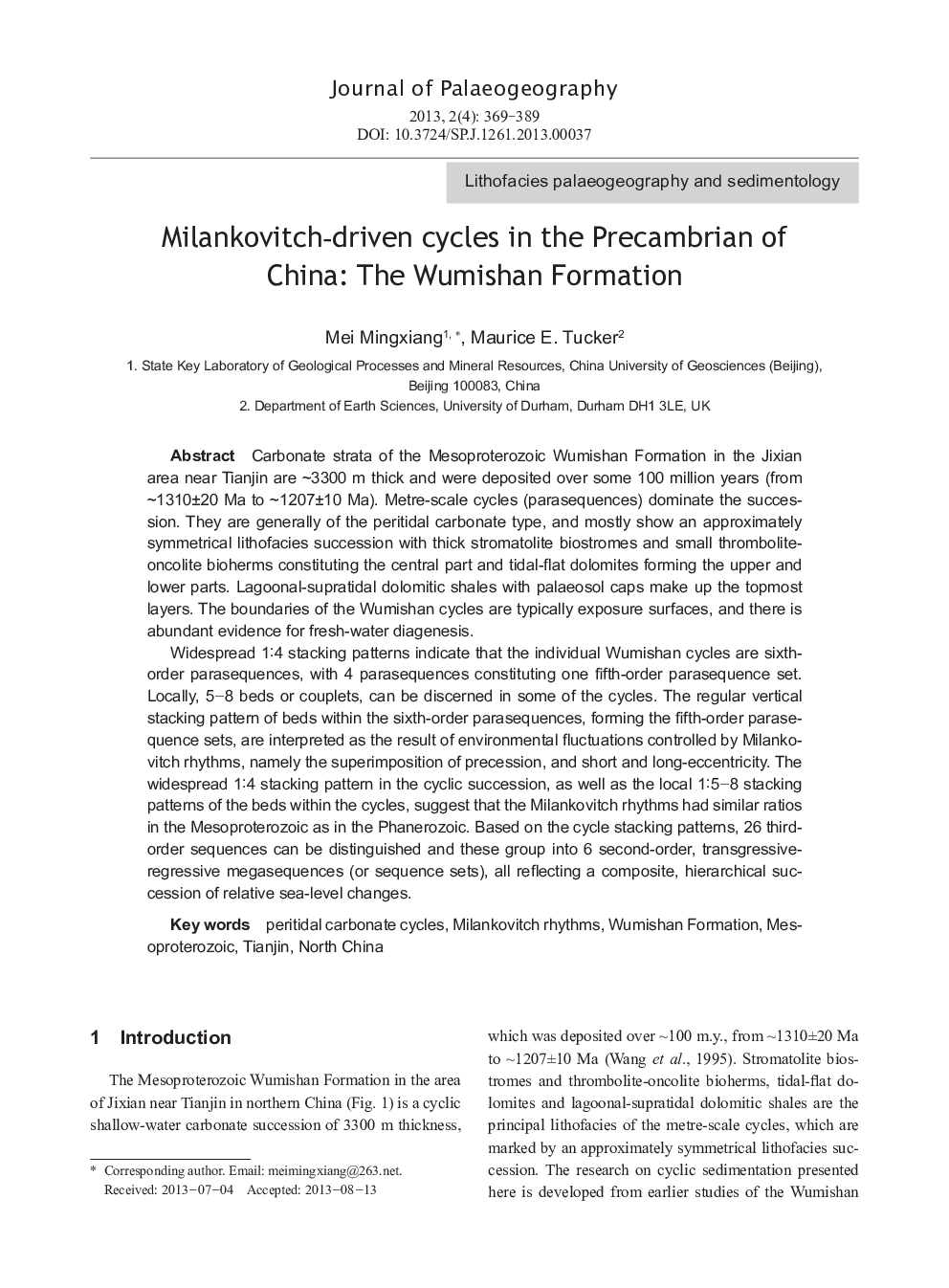| کد مقاله | کد نشریه | سال انتشار | مقاله انگلیسی | نسخه تمام متن |
|---|---|---|---|---|
| 4581071 | 1333679 | 2013 | 21 صفحه PDF | دانلود رایگان |

Carbonate strata of the Mesoproterozoic Wumishan Formation in the Jixian area near Tianjin are ~3300 m thick and were deposited over some 100 million years (from ~1310±20 Ma to ~1207±10 Ma). Metre-scale cycles (parasequences) dominate the succession. They are generally of the peritidal carbonate type, and mostly show an approximately symmetrical lithofacies succession with thick stromatolite biostromes and small thromboliteoncolite bioherms constituting the central part and tidal-flat dolomites forming the upper and lower parts. Lagoonal-supratidal dolomitic shales with palaeosol caps make up the topmost layers. The boundaries of the Wumishan cycles are typically exposure surfaces, and there is abundant evidence for fresh-water diagenesis.Widespread 1:4 stacking patterns indicate that the individual Wumishan cycles are sixth-order parasequences, with 4 parasequences constituting one fifth-order parasequence set. Locally, 5–8 beds or couplets, can be discerned in some of the cycles. The regular vertical stacking pattern of beds within the sixth-order parasequences, forming the fifth-order parasequence sets, are interpreted as the result of environmental fluctuations controlled by Milankovitch rhythms, namely the superimposition of precession, and short and long-eccentricity. The widespread 1:4 stacking pattern in the cyclic succession, as well as the local 1:5–8 stacking patterns of the beds within the cycles, suggest that the Milankovitch rhythms had similar ratios in the Mesoproterozoic as in the Phanerozoic. Based on the cycle stacking patterns, 26 third-order sequences can be distinguished and these group into 6 second-order, transgressive-regressive megasequences (or sequence sets), all reflecting a composite, hierarchical succession of relative sea-level changes.
Journal: Journal of Palaeogeography - Volume 2, Issue 4, October 2013, Pages 369–389